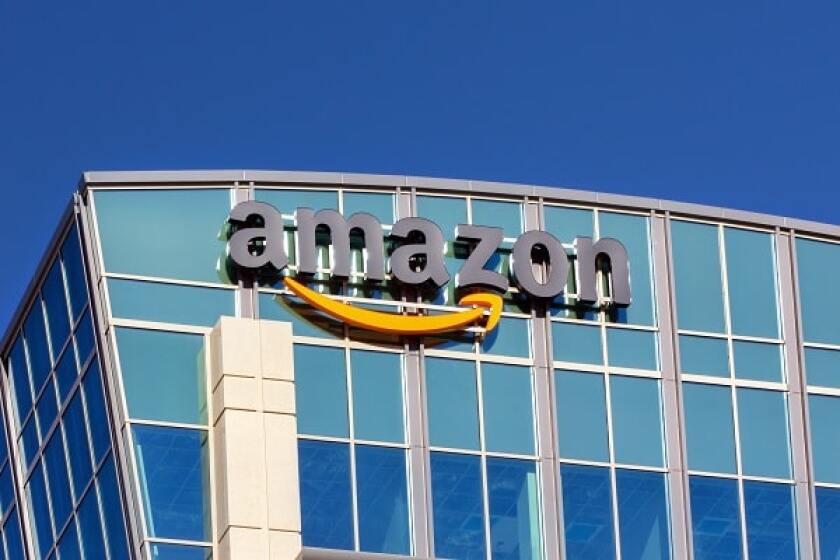The headlines in the mainstream and trade press had an air of praise about them: ‘Amazon blocks 10 billion listings in counterfeit crackdown’, lauded NBC; ‘Amazon spent $700M fighting fraud’, technology website GeekWire declared.
They came in response to a report published by the online marketplace this week detailing its anti-counterfeiting efforts.
Related stories
The report, published on Monday, May 10, marks the first time Amazon has declared such figures and is part of the company’s drive to become more transparent with rights owners and consumers.
According to the report, in 2020 Amazon prevented over six million attempts to create new dubious selling accounts and blocked more than 10 billion suspected bad listings. It also seized and destroyed more than two million products that were detected as counterfeit before they were sent to customers.
The number of brands using Amazon’s intellectual property protection programmes also grew. Users of Amazon’s Brand Registry – which gives brand owners access to enhanced reporting tools – increased from 10,000 to 15,000, and those using Project Zero – a service that allows IP owners to remove listings themselves – rose from 10,000 to 18,000.
On paper, these numbers may appear impressive, and show the sheer scale of counterfeiting that brand owners are up against. Clearly, Amazon is trying to engage with rights owners and move away from any notion that it merely provides a platform on which counterfeiters can thrive.
However, there is another issue at play here.
Sources in our network of in-house counsel repeatedly describe a conflicting relationship with the e-commerce platform.
On the one hand, they are grateful for its responsiveness and willingness to engage when alerted to a problematic listing. On the other, the key missing factor is more proactivity to remove listings and hand over seller details without being prompted.
You can see the logic. Police officers do not only respond when called – they actively patrol the streets to make sure they are safe. You would hope a restaurant owner would not only change its menu in the event that people get food poisoning but would instead ensure that the food is fit for purpose first.
Amazon (and other platforms), IP owners argue, should adopt the same logic and remove suspicious listings without notification.
Shopkeeper responsibility
One source working in-house at a consumer goods company notes that Amazon has become increasingly “shop-like” in recent years.
“It tries to push the responsibility onto brand owners, saying that it will take down listings when notified of an infringement. But this doesn’t work when Amazon pools stock from different sellers: it becomes impossible for brand owners to identify individual ‘sellers’ of infringing products.”
In the real world, of course, a shopkeeper is wholly responsible for the products it sells, and you would be hard-pressed to argue that Amazon should not face the same expectation.
Another source says that while Amazon is often willing to provide seller details, this in itself may not be enough, as the identification itself is often fake.
Another source suggests there should be an obligation on platforms to inform consumers who have bought products from a seller in the time between a takedown request being filed and the seller being removed.
For its part, Amazon has told us previously that it strictly prohibits the sale of counterfeits and is making investments in machine learning and automated systems to detect bad actors and potential counterfeits before they are listed for sale.
“We also work with other marketplaces, governments, and industry coalitions to combat counterfeits,” a spokesperson previously told Managing IP.
The question of liability and the stance that Amazon should take is so fraught that practitioners have suggested the only way to resolve it may be to call on the Court of Justice of the EU (CJEU) again.
Their prayers may yet be answered in the form of a new referral from the Luxembourg District Court to the CJEU in Louboutin C-148/21. The CJEU is to be asked again whether a platform can be regarded as playing an active role in the sales process and be directly liable for trademark infringement.
In Coty v Amazon in April 2020, the CJEU found that the mere storage by Amazon of trademark-infringing goods does not constitute infringement. Germany’s Federal Court of Justice confirmed the ruling in January this year.
So, this is by no means a new question, but perhaps the frequency with which this issue rears its head may prompt a more definitive response. If not, then something has to give.
Either brand owners invest more of their time and energy into policing marketplaces, filing takedown requests where required, and learn to work with Amazon’s policies.
Or Amazon engages more with brand owners’ concerns and takes a more proactive role in policing fakes.
Until one or both of those things happen, the disconnect between the experiences of Amazon on the one hand and of the IP owners it professes to help on the other looks set to continue.











